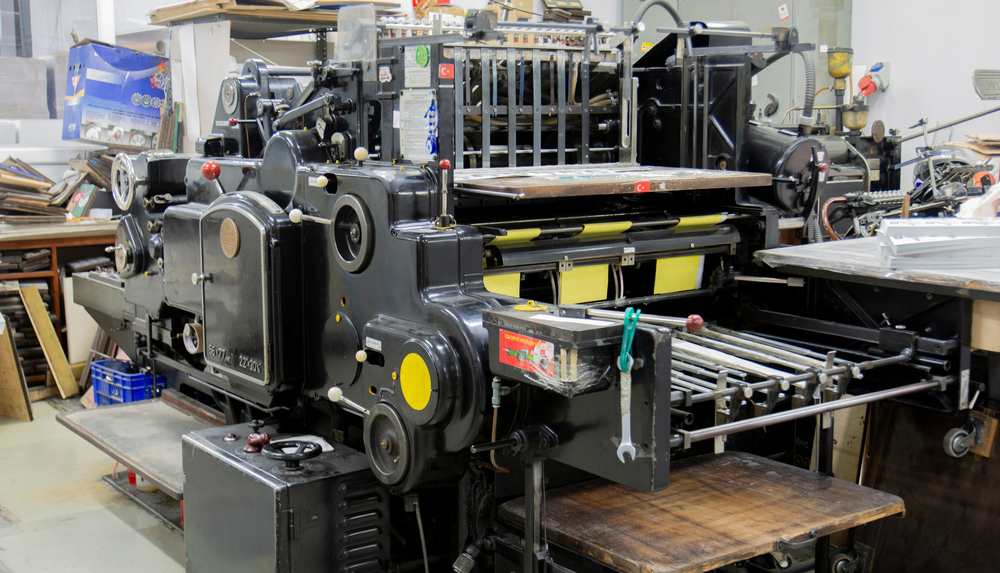Emily Newton, Editor-in-Chief, Revolutionized11.01.22
Producing reliable, high-performing medical devices means using the best tools for the job. Manufacturers must understand how various processes can help them meet the industry’s high standards to succeed in this competitive, highly regulated market. One method that many facilities rely on is medical die cutting.
Die cutting is popular throughout the manufacturing industry for its speed and ability to produce large volumes of identical products. These advantages are particularly valuable in medical device production, which must sustain a supply of more than 10 million items across U.S. hospitals alone.
Conventional mass-produced wearables often fail to fit the particular physiology of some patients, making them uncomfortable. Stretchable and adhesive alternatives have emerged as an ideal solution, as these can adapt to virtually any body shape or skin type. Producing these devices requires precise trimming of flexible materials, which die cutting provides.
Medical die cutting processes can produce adhesive surfaces and fabrics quickly and in massive volumes. This lets device manufacturers meet this growing market’s needs without long lead times or high production costs.
ECGs are the most common cardiovascular diagnostic procedure performed today, with the U.S. seeing more than 100 million annually. The growing availability of consumer medical devices like TENS (transcutaneous electrical nerve stimulation) units further increases the demand for medical-grade electrodes. Manufacturers that hope to meet this demand must produce vast quantities of these flexible products, making die cutting more critical.
Die cutting can uphold high production volumes with minimal to no rest periods, operating almost indefinitely apart from regular maintenance. Few other processes can provide the same efficiency, making it a crucial part of electromedical component production.
Labels aren’t critical to the operation of a device but they’re essential parts of the overall package in the medical sector. The FDA regulates medical device labels closely, and penalties for violating these regulations can reach up to $500,000 or even involve imprisonment. Consequently, ensuring labels are available and easy to read is a serious consideration.
Die cutting machines’ low margin for error is a considerable advantage for printing and cutting labels with such high regulations. Their efficiency is also a significant benefit, considering how many of these stickers manufacturers must produce.
Diagnostic test strips are another growing use case for medical die cutting. Drug tests, rapid disease testing, and similar systems typically require flexible strips of material. It may contain sensitive chemical additives that require high precision, making die cutting the ideal solution.
New applications will likely arise as medical technology advances. Electronics are trending toward flexibility, so die cutters in the future may help shape entire medical devices, not just individual components.
Die materials play an important role in meeting these high sanitation standards. Tungsten carbide can resist corrosion and withstand extreme environments, making it easy to clean and sanitize for medical device production. Manufacturers can also apply antimicrobial coatings to their die cutting machines to prevent bacterial buildup or similar contamination.
Manufacturers should clean equipment regularly, even if they use high-quality, microbe-resistant materials. Separating processes to prevent cross-contamination is also crucial.
Die cutting provides high precision and repeatability by design. However, different machines and materials will feature various strengths and weaknesses, so manufacturers must compare them to determine which will provide the most accuracy for their specific situation.
Machines must offer high repeatability along with precision and accuracy. These standards can reduce waste, keeping production costs down. These savings help manage consumer prices, which is increasingly important due to growing national healthcare spending.
Medical devices, especially wearables and custom solutions, may require unusual shapes or work with unconventional materials. As a result, stock parts aimed at typical mass production processes may not fit companies’ needs. Medical die cutters must be modular, supporting easily swappable, customizable die types.
Die cutting can unlock the full potential of machines and suppliers that meet manufacturers’ unique needs. They can maximize and optimize their production to stay competitive in this growing market.
 Emily Newton is the Editor-in-Chief of Revolutionized. She’s always excited to learn how the latest industry trends will improve the world. She has over five years of experience covering stories in the science and tech sectors.
Emily Newton is the Editor-in-Chief of Revolutionized. She’s always excited to learn how the latest industry trends will improve the world. She has over five years of experience covering stories in the science and tech sectors.
Die cutting is popular throughout the manufacturing industry for its speed and ability to produce large volumes of identical products. These advantages are particularly valuable in medical device production, which must sustain a supply of more than 10 million items across U.S. hospitals alone.
Medical Die Cutting Applications
Die cutting serves many uses within the medical sector. Here are a few of the most significant areas where device manufacturers apply these processes.Wearables
Wearable medical devices have seen a surge in popularity over the past few years. These gadgets can give patients and doctors more information on important medical signals and improve healthcare accessibility, and many rely on die cutting.Conventional mass-produced wearables often fail to fit the particular physiology of some patients, making them uncomfortable. Stretchable and adhesive alternatives have emerged as an ideal solution, as these can adapt to virtually any body shape or skin type. Producing these devices requires precise trimming of flexible materials, which die cutting provides.
Medical die cutting processes can produce adhesive surfaces and fabrics quickly and in massive volumes. This lets device manufacturers meet this growing market’s needs without long lead times or high production costs.
Electromedical Devices
Similarly, many medical devices require flexible adhesive patches to attach electronics to patients’ skin. These electromedical components are crucial to systems like electrocardiogram (ECG) machines and similar monitoring tools.ECGs are the most common cardiovascular diagnostic procedure performed today, with the U.S. seeing more than 100 million annually. The growing availability of consumer medical devices like TENS (transcutaneous electrical nerve stimulation) units further increases the demand for medical-grade electrodes. Manufacturers that hope to meet this demand must produce vast quantities of these flexible products, making die cutting more critical.
Die cutting can uphold high production volumes with minimal to no rest periods, operating almost indefinitely apart from regular maintenance. Few other processes can provide the same efficiency, making it a crucial part of electromedical component production.
Labels
Creating product labels is a more easily overlooked but equally important application of medical die cutting. Die cutting is ideal for label production for its repeatability and ability to maximize the materials’ surface areas, leaving minimal waste.Labels aren’t critical to the operation of a device but they’re essential parts of the overall package in the medical sector. The FDA regulates medical device labels closely, and penalties for violating these regulations can reach up to $500,000 or even involve imprisonment. Consequently, ensuring labels are available and easy to read is a serious consideration.
Die cutting machines’ low margin for error is a considerable advantage for printing and cutting labels with such high regulations. Their efficiency is also a significant benefit, considering how many of these stickers manufacturers must produce.
Other Flexible Components
Medical device manufacturers may also use die cutting processes for various other applications. Wound care products like bandages are one of the most familiar use cases, albeit not a particularly high-tech one. Making these flexible products requires a scale and efficiency only feasible with die cutters.Diagnostic test strips are another growing use case for medical die cutting. Drug tests, rapid disease testing, and similar systems typically require flexible strips of material. It may contain sensitive chemical additives that require high precision, making die cutting the ideal solution.
New applications will likely arise as medical technology advances. Electronics are trending toward flexibility, so die cutters in the future may help shape entire medical devices, not just individual components.
Special Considerations for Medical Die Cutting
Given the healthcare industry’s extensive regulations, medical die cutting must meet unique standards. Device manufacturers must consider the following when choosing die cutting equipment, partners and processes.Sanitation
One of the most important considerations is ensuring all products are as clean as possible. Any contamination during the manufacturing process could introduce health concerns. Manufacturers could face legal action from users or penalties from the FDA if they’re severe enough.Die materials play an important role in meeting these high sanitation standards. Tungsten carbide can resist corrosion and withstand extreme environments, making it easy to clean and sanitize for medical device production. Manufacturers can also apply antimicrobial coatings to their die cutting machines to prevent bacterial buildup or similar contamination.
Manufacturers should clean equipment regularly, even if they use high-quality, microbe-resistant materials. Separating processes to prevent cross-contamination is also crucial.
Precision and Accuracy
Medical die cutting must also achieve high levels of precision and accuracy. These devices are typically expensive, involving complex electronics and advanced materials. As a result, any mistakes can be costly, so manufacturers must use equipment and processes with a low margin for error.Die cutting provides high precision and repeatability by design. However, different machines and materials will feature various strengths and weaknesses, so manufacturers must compare them to determine which will provide the most accuracy for their specific situation.
Machines must offer high repeatability along with precision and accuracy. These standards can reduce waste, keeping production costs down. These savings help manage consumer prices, which is increasingly important due to growing national healthcare spending.
Customization
Mass production is one of the leading use cases for die cutting in the general manufacturing industry. Medical device companies can benefit from high volumes too, but many also need flexibility. Consequently, these machines should also be able to support significant customization.Medical devices, especially wearables and custom solutions, may require unusual shapes or work with unconventional materials. As a result, stock parts aimed at typical mass production processes may not fit companies’ needs. Medical die cutters must be modular, supporting easily swappable, customizable die types.
Die Cutting Has Many Advantages for Medical Devices
Die cutting can help medical device manufacturers meet rising demand, work with unusual materials, and meet high quality standards. Understanding how they address these needs is the first step to applying these processes effectively.Die cutting can unlock the full potential of machines and suppliers that meet manufacturers’ unique needs. They can maximize and optimize their production to stay competitive in this growing market.














